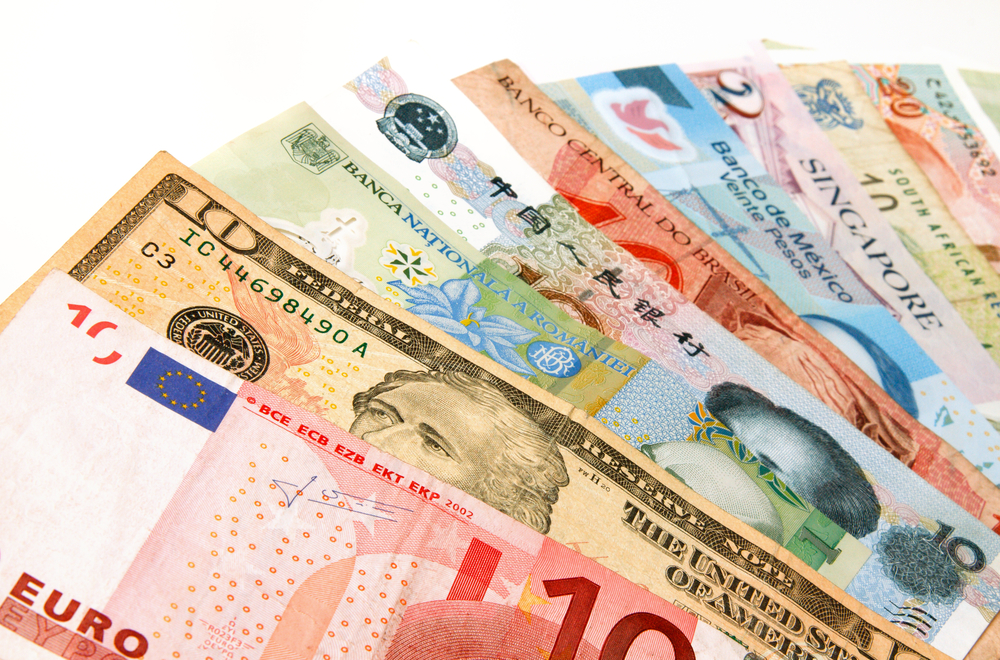Not All Central Banks (China) Report Currency Reserve Allocations

Please note that we are not authorised to provide any investment advice. The content on this page is for information purposes only.
At the end of each quarter, the IMF reports on currency reserve holdings by central banks for the preceding quarter. What investors are most interested in is the currency allocation of those reserves.
Not all central banks report the allocation of their reserves. Indications are that China, the world’s largest holder of reserves, does not report the allocation of its reserves. If it wants the yuan to be included in the SDR basket, it is probably a good idea to adopt the IMF’s best practices.
At the end of each quarter, the IMF reports on currency reserve holdings by central banks for the preceding quarter. What investors are most interested in is the currency allocation of those reserves.
Not all central banks report the allocation of their reserves. Indications are that China, the world’s largest holder of reserves, does not report the allocation of its reserves. If it wants the yuan to be included in the SDR basket, it is probably a good idea to adopt the IMF’s best practices.
The IMF reports currency allocation of 53.3% of $11.6 trillion of global reserves. China accounts for more than $4 trillion of the remaining $5.515 trillion (46.7% of global reserves). Analysts and economists scrutinize the allocation trying to tease out details about the currency preferences of central banks. Sometimes observers miss the forest for the trees or do not understand what they are seeing. Others demonstrate the veracity of Nobel-prize winning economist Ronald Coarse observation that if tortured long enough statistics will confess to anything.
Here are six largely overlooked points when discussing the Q4 reserve figures.
1. The most important point that is under-appreciated is the conversion of reserves into dollars. Reserves report in dollars. For example, when the dollar appreciates, the dollar value of euro reserves depreciates. The reserves invest in assets, mostly bonds, though an increasing number of central banks invest in equities too. Asset values change over time and this needs accounting as well.
2. Central banks move at glacial speeds in changing reserves. The increase in the dollar’s share of reserves heralded by the headline writers was 0.50%. The euro’s share fell by 0.39%. Sterling’s share fell 0.05%
3. Overall reserves fell by $166 bln in Q4. This follows a $223 bln decline in global reserves in Q3. Valuation accounts for part of the decline. Seemingly going unnoticed, the dollar holdings themselves actually fell by $31 bln. This is very small potatoes. There are still 3.826 trillion dollars in official reserves with reported allocations. It is interesting to think about why dollar reserves may have fallen. Contrary to the currency war meme, not all central banks want to have weaker currencies. Several central banks believe to have intervened Q4 14 to support their currency, and this often entails the sales of dollars.
4. The dollar value of euro reserves dropped $46 bln to $1.351 trillion. This is a 3.3% decline. The IMF tells us the dollar rose from 0.7947 euros to 0.8237 (= euro falling from $1.2583 to $1.2140) over the course of Q4 14. The currency valuation then depressed the dollar value of the euro holdings by 3.6%. It could be that the IMF does not use the quarter-end rates to translate the euros into dollars. It could be that the 0.3% (3.6-3.3) is a rounding error. It could be that some reserve managers bought euros (~4.2 bln euros). It could be that the some Eurozone denominated asset was marked up.
5. The dollar value of most of the currency reserve holdings fell in Q4 14. There was one exception. The dollar value of the reserves in Swiss francs rose to $17.18 bln from $16.46. This is almost a 4.4% increase. The dollar rose 3.2% against the Swiss franc. Franc reserves are $1.25 bln more than passive assumptions would suggest.
6. The dollar value of allocated reserves fell by almost $100 bln or 1.6%. The dollar value of unallocated reserves fell by $67 bln or 1.3%. China’s central bank reported that is reserves fell by $44.7 bln in Q4 14 or 1.2%. The small differential seems more of a coincidence that a signal of similar investment decisions. Consider the change over the past two years. Allocated reserves have slipped by $3 bln while unallocated reserves have risen by $650 bln, of which China’s reserves account for $532 bln.
Six Mostly Overlooked Points about the Currency Reserve Data is republished with permission from Marc to Market




